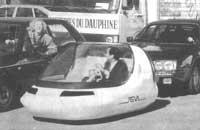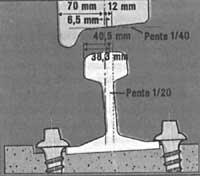The electric car: without wanting
1990/10/01 Otaolaurretxi, Jon Iturria: Elhuyar aldizkaria
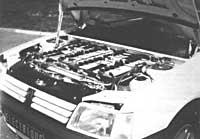
The electric car is, according to many, the most suitable vehicle for the environment. It is silent, does not emit combustion gases and has an optimal energy performance. The electric car, therefore, is a very interesting vehicle, but it also has its limitations. The engineers of the technical offices of the motorists are trying and cannot overcome these limitations.
One of the problems is the way to supply energy to the car. To do this, the use of fuel cells is still too expensive, as it requires expensive metals. For example, a small car would need at least 50 grams of platinum.
Another solution, and the one most used so far in the trials, is to install batteries. These batteries should be as agile as possible and at the same time should store as much energy as possible. In other words, the battery must store the maximum of watts x hours per kilo that weighs, so that the car can have an acceptable range without recharging the batteries.
In addition, the battery must release power quickly when the car needs it, for example when it accelerates to advance another car. Therefore, the battery should have a maximum power of watts per kilo of itself.
We have to differentiate the energy from the power well, because they are two different things. Anyone who weighs three hundred kilos at a distance of one hundred meters spends the same energy as the corridor Balentin Rokandio, which moves at the same distance. Balentin Rokandio, however, spends that energy much faster because it has higher acceleration than others. That is why it has more power than others.
In the field of the electric car, the sodium/sulfur battery of 150 kilos of weight can store the same energy as the lead of 500 kilos of weight, but this sodium/sulfur battery would only have a power of six kilowatts (for example, the Seat Panda has four times more).
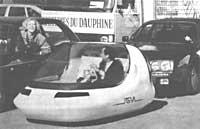
To reduce costs, the battery must have a long life, that is, it must be charged and discharged many times without deteriorating. In addition, it is interesting that the batteries are without maintenance. The Renault house seemed to have achieved good results in the last four years with nickel/iron batteries in the laboratories, but in the tests of truth there has been a remarkable failure, with a very complex maintenance and a loss of twenty liters of water for every hundred kilometers.
Currently two types of non-maintenance batteries are manufactured: lead and nickel/cadmium. The weight of the nickel/cadmium battery to achieve the same perfomance in the car is half of the other and in the same weight of the battery the autonomy of nickel/cadmium is 50% higher, but also seven times higher.
General Motors is also experimenting with the electric car. In its developed model, each front wheel is affected by two electric motors. The car has a total power of 114 horses, accelerates from 0 to 100 km/h in 8 seconds, can reach a maximum speed of 160 km/h and an autonomy of 180 km/h when it moves to 80 km/h. The car has a total weight of 1,100 kilos, of which 400 correspond to batteries. To get such a light car, a lot of composites (also in chassis) have been used, which has meant an important cost increase. Therefore, they will not be able to manufacture it in large series for the moment.
Citroën, Peugeot and Volswagen-Audi have also tested in Europe in the field of electric cars, but since the beginning they have proposed to manufacture a relatively cheap car. For this reason, it has been adopted as structure the classic cars that are now manufactured in series, where motors and electric batteries have been installed.
Citroën has installed its batteries to the van C25 and Peugeot to the van J5. These vans weigh 2,400 kilos and can carry 800 kilos of cargo. The maximum speed they can reach is 90 km/h and their autonomy in the city is 75 km. The battery charge takes between 5 and 6 hours. However, once the batteries have been charged 400 times (or have passed about 40,000 kilometers), it is necessary to replace them with new 600,000 pesetas. by the way of
Peugeot 205
The electric model is also ready. It can reach a speed of 100 km/h and an autonomy of 115 km. Its total weight is 1,056 kilos, while nickel/cadmium batteries weigh 282 kilos. Batteries must be charged after 8 or 10 hours of operation.
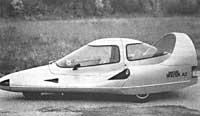
For the moment it seems that the ideal is to use electric cars in the city. In addition, when the car is brake, the batteries can be charged using deceleration. This allows to recover up to 20% of the energy, unlike what happens in gasoline cars.
However, on roads outside the city, the electric car does not reach the minimum perfomances necessary. For this reason, Renault and Peugeot are also opening new roads. A polycarbonate turbine actuates an alternator and the electric current generated in it loads the batteries. Then two or four electric motors of the batteries are fed.
On non-urban roads the turbo alternator would directly power electric motors. In the city, the turbine would turn off, absorbing all the power of the battery. The autonomy of the vehicle in the city would be 20 km.
Volswagen-Audi is based on the Audi 100 Quattro model to develop its electric car. It would have a gasoline engine (2.3 liters and 136 horses) to drive the two front wheels outside the city. However, the drive of the rear wheels would make it an electric motor of 12.6 horses and 60 kilos of weight. The electric motor would be powered by nickel/cadmium batteries, with a weight of 181 kilos. The batteries would last ten years without problems. The car will weigh a total of 1,740 kilos and will be able to reach in the city a maximum speed of 50 km/h with an autonomy of one hour.
This is the alternative that is being worked in cars to obtain mechanical energy without burning petroleum products. Batteries and electric motors are cleaner because they do not pollute the environment, but the speed, power and autonomy of the electric car are for the moment limits that manufacturers are losing to overcome them.

Gai honi buruzko eduki gehiago
Elhuyarrek garatutako teknologia




